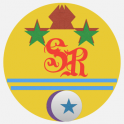Nymphs jinn and entities by Steve Ramsey
Aphrodite :
[The mountain nymphs] rank neither with mortals nor with immortals: long indeed do they live, eating heavenly food and treading the lovely dance among the immortals, and with them the Sileni and the sharp-eyed Slayer of Argus mate in the depths of pleasant caves.
Nurturing
Nymphs are often shown as lovers of other entities and heroes , or as their mothers. They can be nurturing:
- Thetis, not only a Nereid but the mother of Achilles , also helped Zeus and Dionysus when they were in trouble.
- Nymphs of Nysa tended to Dionysus when he was young.
- When Hephaestus was tossed off Olympus by a parent (by Zeus) and landed in Lemnos, Eurynome and Thetis, two Nereids, tended him.
This nurturing quality may be one way nymphs are distinguished from Dionysus’ maenad followers, according to Guy Hedreen in “The Journal of Hellenic Studies.”
Playful
Nymphs cavort with satyrs, particularly in depictions of Dionysus. Apollo and Dionysus are their leaders.
Personifications
Not uncommonly, some nymphs share their names with the places they inhabited. For example, one of these eponymous nymphs is Aegina. Rivers and their personifications often share names. Examples of associated natural bodies and divine spirits aren’t limited to Greek mythology . Tiberinus was god of the Tiber river in Rome, and Sarasvati was a goddess and river in India.
Not Quite Goddesses
Nymphs are often referred to as goddesses entities , and some are immortal. Although they are naturally long-lived, many nymphs can die. Some call them the remain of the watchers from the book of enoch at Noah time. Nymphs can cause metamorphoses. This is the Greek word for changing shape, usually into plants or animals, they are a shape shifters .
Some one from USA claimed he saw one while he was on hill watching a river then he say a small figure and he focused on it and it look like a small human , he said when he tried to come close the entity saw him and immediately changed to a frog or a fish and jumped in the river. as in the novel by Kafka and the book of mythology by Ovid . Metamorphosis also works the other way around, so that human women can be changed into nymphs.
[B]ut at their birth pines or high-topped oaks spring up with them upon the fruitful earth, beautiful, flourishing trees, towering high upon the lofty mountains (and men call them holy places of the immortals, and never mortal lops them with the axe); but when the fate of death is near at hand, first those lovely trees wither where they stand, and the bark shrivels away about them, and the twigs fall down, and at last the life of the nymph and of the tree leave the light of the sun together.
Famous Nymphs
- Amalthea (of cornucopia fame)
- Anna Perenna
- Arethusa (a follower of Artemis who sacrificed much for her chastity)
- Calypso (nymph-goddess who entertained Odysseus )
- Creusa (daughter of Gaia and the river god Peneus)
- Echo (whose name we hear in certain repetitions)
- Egeria (cared for Athens’ founder-hero, Theseus’ son Hippolyte; she taught the second king of Rome, Numa Pompilius )
- Harmonia (mated with Ares to produce the Amazons; Harmonia’s necklace features in the story of Cadmus of Thebes )
- Syrinx (a wind instrument and an attribute of pan)
- Thetis (connected with Achilles and Hephaestus)
- Thousa (mother of Polyphemus , the cyclops in the Odyssey who eats several of Odysseus’ companions when they were uninvited houseguests)
Types of Nymphs
Nymphs are divided into types:
- Acheloids (from the river Achelous), river entities
- Alseids (groves), thoe more like the jinn
- Dryads (forests) –
- Hamadryads (trees)* The children of Hamadryas, from “Deipnosophists” (“Philosopher’s Banquet,” by Athenaeus, written in the 3rd century AD):
- Hydriads (water)
- Leimoniads (meadows)
- Meliads (ash trees) , I use to have one of them and my cat always love to sit by it and not under other trees
- Naiads (springs and rivers)
- Napaea (valleys)- jinn
- Nereid (the Mediterranean)-female jinn
- Oceanids (the sea)
- Oreads (mountains)
- Aegeirus (the poplar)
- Ampelus (the vine)
- Balanus (the acorn-bearing oak)
- Carya (the nut-tree)
- Craneus (the cornel-tree)
- Orea (the ash)
- Ptelea (the elm)
- Suke (the fig-tree), sometimes they present as a snake so be careful.
